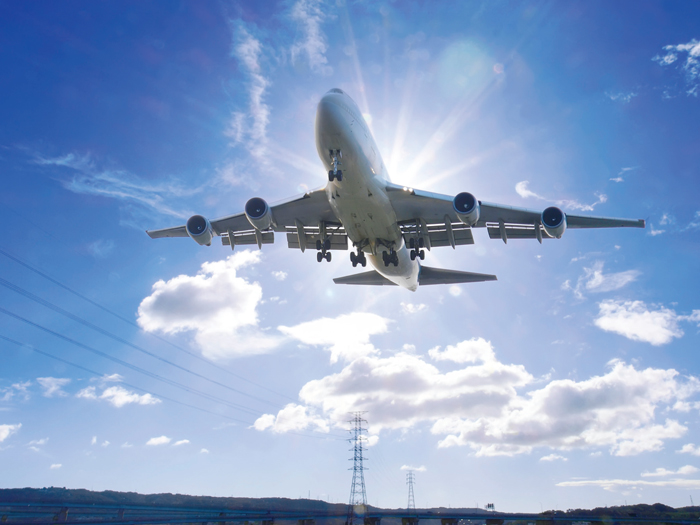Southwest Airlines Is Taking Off and Workers’ Comp Excellence Is the Destination

Patti Colwell spent the better part of last year’s Christmas Eve on the phone working to get an injured worker home for the holidays. The worker needed a medical evacuation in order to see her family.
While some workers’ comp programs wouldn’t have made the effort to get an injured worker home for Christmas, Colwell’s employer, Southwest Airlines, doesn’t subscribe to a run-of-the-mill approach to employee relationships.
“We truly do believe in treating others as we want to be treated,” said Colwell, who is Southwest Airline’s workers’ compensation program manager.
“When you’re dealing with an injured employee, they may not always be the most pleasant because they’re hurt. They may be in pain, they may be suffering financial consequences that may be a hardship on their family, so treat them like you would want your mother, father, brother, sister or child to be treated if they were in that situation.
“From the day they’re hired, the Southwest spirit and hospitality is ingrained in them. For us, hospitality really means making people feel welcomed, cared for, and appreciated,” she continued.
Hospitality and treating others with care are the cornerstones of the Southwest spirit. That attitude doesn’t just extend to customers; it’s a priority for the way employees are treated as well.
By making injured worker advocacy the center of its workers’ compensation program, Southwest has decreased its indemnity claims, worked with labor unions to expand its return-to-work program, and implemented training for everyone who works with its program. All of these achievements and more earned the company an honorable mention in the 2019 Theodore Roosevelt Workers’ Compensation & Disability Management awards.
Supporting Injured Workers at Every Step
One of the primary things employees need after a workplace injury is resources. Many of them have questions about the workers’ compensation process and are concerned about how their injury
will impact their families.
“We know that it’s a life changing experience when someone has an injury. We want to be sure that they have all the resources they need,” Colwell said.
To make sure that employees know what’s available to them, the workers’ compensation team at Southwest sends an email with information about what to expect whenever injuries are sustained.
If the employee has questions after that, they can call the company’s 24/7 hotline and speak to a member of the workers’ compensation team.
“We advise them of some of their health and welfare benefits that they might be eligible for and give them the resources, the experts in that area to contact,” Colwell said.
“We pride ourselves on knowing some of the other programs at Southwest that might be able to help them.”
Southwest also uses a team of dedicated telephonic case managers and surgery nurses to help injured workers.
Their telephonic nurses offer triage services and help workers manage co-morbidities, while their surgery nurse program allows injured workers to speak with a nurse about what to expect pre- and post-surgery.
“Our nurses have been such a big boon to our program,” Colwell said.
Putting the Focus on Return-to-Work
One key way the airline has worked to help injured workers is through its return-to-work program. In 2014 and 2015, Southwest began working with labor unions to create salary continuation and light duty return-to-work programs. Administrators met periodically for the first year of the program with union leaders to make sure the program would work for injured workers.
“We met with union leaders to say, ‘Here are the tasks that are involved in these jobs. We’re going to have them ergonomically evaluated, we’re going to put some numbers to it, so we know what tasks a person can do when a physician says ‘no pushing or pulling over 10 pounds,’” Colwell said.
For the salary continuation program, the employee is paid the difference between their workers’ compensation benefits and their salary for the first 12-15 weeks after an injury.
To qualify for the program, employees attend a company-designated clinic where they are evaluated by a physician every 30 days. Once they are cleared to return to work with restrictions, an injured worker is assigned a light duty position and meets with their supervisor.
Since implementing this program, the company has seen a decrease in indemnity claims. In 2014 indemnity claims accounted for 63.54% of the company’s claims count, whereas in 2018 they accounted for only 41.28%.
“We’ve really tried to communicate with our unions that return-to-work is not only good for Southwest, it’s good for the employee. It gets them stronger, better, back to normal capacity quicker,” Colwell said.
Creating a Culture of Caring
The employee advocacy culture Southwest has worked to instill in its workers’ compensation program extends outside of the company’s workers’ comp team. TPAs, claims adjusters, and nurses are also encouraged to treat injured workers with care and compassion. Southwest’s TPA, Sedgwick, nominated the airline for this award.
“We expect our vendors to treat our employees the same way we do,” Colwell said.
In order to make sure their vendors are offering the same kinds of support to injured workers, the company holds a 3-day claims conference each year to help the claims team better understand the company’s culture.
“Our adjusters really do feel like they are an extension of the Southwest team and sometimes it’s hard to tell whether you’re talking to a Southwest workers’ comp person or to one of the third- party administrator adjusters,” Colwell said.
At the end of the day, the workers’ comp team knows that their work is done in the service of their fellow employees, whom they like to think of as family.
“We have a wonderful family of more than 60,000 employees and our goal is not only to keep Southwest Airlines in compliance with the state laws governing workers’ comp, but it’s also to take care of those employees,” Colwell said. &











